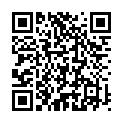|
|
|
| Module code: MST.EAS |
|
|
2V (2 hours per week) |
|
2 |
| Semester: 5 |
| Mandatory course: no |
Language of instruction:
German |
Assessment:
Written exam
[updated 05.10.2020]
|
KI674 (P200-0008) Computer Science and Communication Systems, Bachelor, ASPO 01.10.2014
, semester 5, optional course, non-technical
KIB-ASTR (P200-0008) Computer Science and Communication Systems, Bachelor, ASPO 01.10.2021
, semester 5, optional course, non-technical
KIB-ASTR (P200-0008) Computer Science and Communication Systems, Bachelor, ASPO 01.10.2022
, semester 5, optional course, non-technical
MAB.4.2.1.3 (P200-0008) Mechanical and Process Engineering, Bachelor, ASPO 01.10.2013
, semester 5, optional course
MST.EAS (P200-0008) Mechatronics and Sensor Technology, Bachelor, ASPO 01.10.2012
, semester 5, optional course, non-technical
MST.EAS (P200-0008) Mechatronics and Sensor Technology, Bachelor, ASPO 01.10.2019
, semester 5, optional course, non-technical
MST.EAS (P200-0008) Mechatronics and Sensor Technology, Bachelor, ASPO 01.10.2020
, semester 5, optional course, non-technical
PIBWN25 Applied Informatics, Bachelor, ASPO 01.10.2011
, semester 5, optional course, not informatics specific
PIB-ASTR (P200-0008) Applied Informatics, Bachelor, ASPO 01.10.2022
, semester 5, optional course, not informatics specific
PIB-ASTR (P200-0008) Applied Informatics, Bachelor, SO 01.10.2026
, semester 5, optional course, not informatics specific
MST.EAS (P200-0008) Mechatronics and Sensor Technology, Bachelor, ASPO 01.10.2011
, semester 5, optional course, non-technical
|
30 class hours (= 22.5 clock hours) over a 15-week period.
The total student study time is 60 hours (equivalent to 2 ECTS credits).
There are therefore 37.5 hours available for class preparation and follow-up work and exam preparation.
|
Recommended prerequisites (modules):
None.
|
Recommended as prerequisite for:
|
Module coordinator:
Prof. Dr. Martin Löffler-Mang |
Lecturer: Prof. Dr. Martin Löffler-Mang
[updated 01.10.2012]
|
Learning outcomes:
After successfully completing this module, students will be able to orient themselves on the night sky, recognize structures and find the most important constellations in the northern sky. In addition, they will be capable of using the most important basic tools for astronomical observations. Students will also be familiar with elementary celestial mechanics and will be able to make simple predictions for the rising and setting of selected celestial bodies. Finally, students will know about the various astronomical objects in the sky and will be familiar with the standard models for both the formation of the universe (Big Bang theory) and its further development (accelerated expansion of the universe).
[updated 19.02.2018]
|
Module content:
Part I: Introduction
1. Where Are We?
2. The Night Sky
3. Observation Tools
Part II: The Solar System
1. The Sun
2. The Moon
3. The Planets
4. Celestial Mechanics
Part III: Astronomical Instruments
1. Large Telescopes
2. Space Telescopes
Part IV: Astrophysics
1. Cosmology
2. The Principles and Terms of Nuclear Physics (Folkerts)
3. Stars, Star Formation, The Origin of Elements (Folkerts)
4. Are We Alone?
[updated 19.02.2018]
|
Teaching methods/Media:
Lecture, observations
[updated 26.02.2018]
|
Recommended or required reading:
Kosmos-Himmelsjahr (almanac)
Sterne und Weltraum (monthly journal)
[updated 19.02.2018]
|


